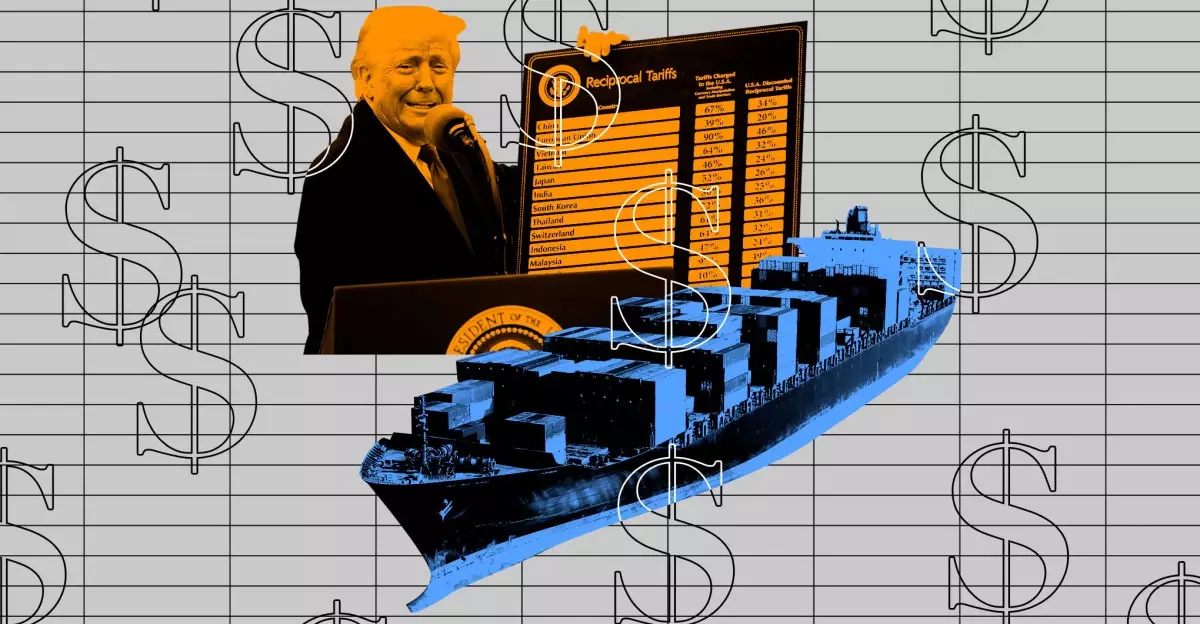In a recent wave of updates, the U.S. Customs and Border Protection (CBP) announced that certain consumer technology imports have been exempted from tariffs, particularly those coming from China. This news, which follows a series of contentious trade policies under the Trump administration, represents a shift toward a more favorable landscape for both consumers and tech companies alike. Among the items exempted are smartphones, laptops, hard drives, and crucial components like computer processors and memory chips—integral goods in the technology ecosystem. The insight provided by Bloomberg on this matter sheds light on how these exemptions could potentially reshape the tech market’s pricing structure.
Despite these exemptions, it’s crucial to recognize that not all tariffs have been lifted. The 125 percent additional tariff that previously applied to certain Chinese goods remains in force, alongside previous tariffs implemented during the administration. This evolving situation underscores a complex balancing act where manufacturers and retailers are adjusting to a whirlwind of regulatory shifts. However, the offsetting of specific duties could pave the way for a more stable pricing environment that would benefit consumers, especially given the rising costs associated with tech products in recent years.
The Impacts on the Tech Market and Consumer Prices
The implications of these tariff exemptions extend far beyond mere policy changes; they have the tangible potential to influence retail prices across the tech industry. Tech enthusiasts looking to get their hands on the latest gadgets may experience changes in pricing that reflect these exemptions. Notably, companies like Sony seem to have already factored increased tariffs into the pricing of new products, which illustrates how sensitive the business decisions in technology are to the imposition or relief of tariffs.
Additionally, the memo from the White House regarding small-parcel shipping duties offers a glimmer of hope for affordable consumer goods shipping—a critical factor for e-commerce growth. However, while some companies will likely relish in this reprieve, others may retain previous price points to buffer against unpredictable changes in policy. For instance, Nintendo’s decision to delay preorders for its anticipated Switch 2 while maintaining its launch price reflects a cautious approach to navigating tariff-related anxieties.
The anticipation surrounding this situation reveals a noticeable divide within the market: while some manufacturers choose to adapt swiftly, others hesitate to alter their pricing strategies amidst ongoing uncertainty. Consumers are left to watch closely as companies make their next moves, highlighting the ever-evolving dynamics of supply chains influenced by international relations.
A Glimpse into Future Trade Relations
These tariff exemptions signify broader implications for future U.S.-China trade relations. Amidst heightened tensions, particularly surrounding technology and intellectual property, the government’s latest guidance appears to recognize the importance of maintaining a consumer-friendly approach. It’s a welcome shift that can potentially ease the fears surrounding prolonged price hikes for technology driven by continuous trade wars.
However, the imposing 20% duty aimed at countering the shipment of fentanyl precursors serves as a stark reminder that the trade landscape is fraught with dual objectives. This dual-layered approach is emblematic of the obstacles ahead—validating concerns about how geopolitical pressures can lead to complicated policies that affect everyday consumers. The need for a comprehensive strategy that isolates technology-related products from broader punitive actions is paramount.
Consumer Enthusiasm in the Face of Uncertainty
Amidst this uncertainty, there’s a palpable sense of enthusiasm from consumers eager for the latest technology. The exemptions serve not only to alleviate concerns about exorbitant prices for new devices but also ignite hope for innovation breathing unhindered into the market. As manufacturers grapple with their pricing strategies, consumers find themselves in a strategic position, able to influence how rapidly the market evolves in response to accessibility needs.
The anticipation surrounding impending product launches could usher in a new era characterized by accessibility and consumer awareness, steering manufacturers toward more competitive offerings. As companies become increasingly conscious of consumer sentiment, we may witness more collaborative approaches within the industry, enhancing product availability and affordability in our tech-saturated lives.
Ultimately, navigating this complex web of tariffs and exemptions underscores a critical juncture for the technology market. The balance between trade policy and consumer welfare must be carefully maintained to ensure that the ever-evolving landscape of technology remains both innovative and accessible.


Leave a Reply